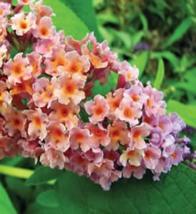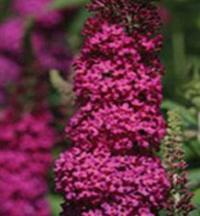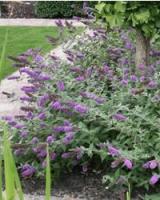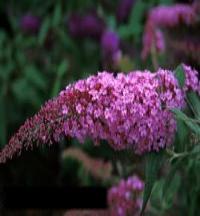Incorporate A Butterfly Bush Into Your Garden To Attract A Wide Variety Of Butterflies
Buddleia frequently referred to as the Butterfly Bush is incredibly easy to grow from seed, cuttings or shrubs, and once it has become fully established can grow to around 8 to 10 feet tall.
Butterflies absolutely adore the Buddleia bush due to the nectar, a key food source that provides them with all the energy they need to thrive and reproduce.
Buddleia is very tolerant of soil conditions and will grow successfully under most conditions. However for the best blooms a sunny spot with well draining soil and some organic material will provide the best results.
To make sure that your Buddleia remains healthy for the following season it is advisable to prune the bush back to around 24" tall during late winter or ealry spring leaving 2 or 3 buds above the base.
This may sound extreme and will result in a heap of branches to throw away, however it is necessary work. Furthermore, to stimulate re-flowering, old flowers should be removed when necessary, as this will encourage new flowers and help to make an even more impressive sight.
By far the most popular Buddleia is the variety known as B.davidil. Left alone they will grow to 8 feet or more. The flowers can be upto 18" long, flowering between July and September. They are a real magnet for butterflies.
Pink Delight...
The Buddleia ' Pink Delight' is a compact bush with grayish green leaves and fragrant, deep pink flowers. It is a vigorous growing shrub that boasts deep pink flowers from mid-summer onwards and is a magnet to butterflies. This butterfly bush flowers throughout the summer and fall and is very easy to grow.
Butterflies and bees will flock to the honey-scented blossoms, whose dilute nectar is sweetest in the midday sun.
If you plant it near a path or patio the shrub will provide you with a delightful fragrance too. This plant flowers on new growth and needs to be pruned back to the ground during springtime.
BiColor...

Buddleia x weyeriana BiColor is the first Butterfly Bush to boast multiple colors on each bloom. It is a fragrant, long-blooming Bush with bountiful yellow and lavender blooms, opening to peachy-pink with a yellow cast as it ages.
Impress all of your neighbors with this distinctive new buddleia bush that blooms from July until fall. The panicles grow up to 10 inches long and show up well against the clean grey-green foliage. BiColor Butterfly Bush is a deciduous with a compact growth habit and blooms mid-summer until fall.
It delivers priceless summer and early fall flowers when few other shrubs are in bloom. They are best grown in group plantings in borders, cottage gardens, rose gardens or butterfly gardens.
In most cases it doesn't make a good individual specimen shrub, altough if planted in close proximity to a path or patio the bush will give you a most charmingl fragrance. It is mostly pest-free, and blooming on new growth will beenfit from being pruned back in that spring.
Miss Molly...

Buddleia Miss Molly will instantly turn into the focal point of any bed or border. Miss Molly has a magnificent color and superb fragrance that butterflies and hummingbirds love.
It grows tall with a very long bloom time, which makes it an excellent choice for the butterfly garden. It exhibits its sangria-red flowers on a mounded bushy plant and blooms in late summer until the first hard frost.
This is a compact bush which is somewhat smaller than a number of other buddleia plants you wil come across. Its eye-catching flower color makes late summer gardens come alive.
Blue Chip...

Buddleia Blue Chip® is the first in a completely new series of miniature butterfly bushes, with flowers that bloom throughout early summer until late fall.
It is indeed a remarkable miniature plant with fragrant re-blooming flowers. It doesn't need trimming or deadheading, but it should be cut close to the ground in late wintertime.
As well as acting like a butterfly magnet, it is drought tolerant and deer resistant. The plants stand some soil dryness, but perform poorly in wet conditions.
This wonderful bush can be used as marvelous ground cover or a low hedge simply because it stays shorter, growing to only 36 inches tall.
Blue Chip works well in patio containers, and makes a superb companion for ornamental grasses.
Gardening Tools › Butteryfly Garden › Butterfly Bush









New! Comments
Have your say about what you just read! Leave me a comment in the box below.